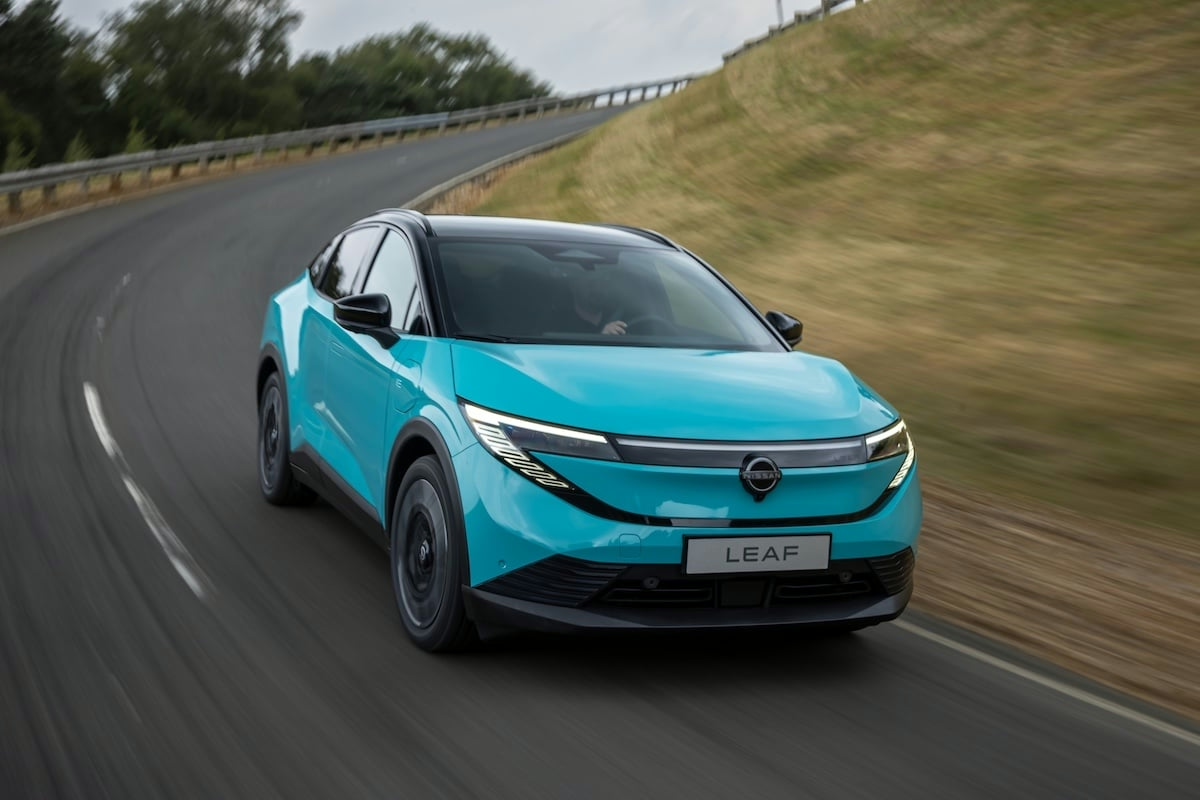The new Nissan LEAF focuses on style and range to attract buyers

Nissan presents the new generation of the LEAF, the iconic model of the electric shift initiated by the Japanese manufacturer.
More modern, more efficient, and better equipped, the Nissan LEAF, previously a compact 100% electric vehicle, returns in the form of an SUV with the ambition to attract an ever-more demanding clientele.



The first visible revolution: the design. Gone are the sober, let’s say dull, lines of previous versions; the new LEAF adopts a bolder crossover silhouette, sculpted for aerodynamics with a Cx of 0.25. Flush handles, sharp optics, redesigned wheels, and fluid surfaces give the whole a notably contemporary style. Despite its 4.35 m, it maintains the crucial compactness for urban use while offering a generous trunk of 437 liters.



If it targets a chic urban clientele, the LEAF does not forget that any respectable city dweller has aspirations for elsewhere. Under the hood, two battery configurations are offered: 52 kWh for 436 km of WLTP range, and 75 kWh to reach up to 604 km. Thanks to fast charging up to 150 kW, 417 km can be regained in half an hour. Notably, Nissan has the courage to highlight the differences between WLTP range and highway range, promising more than 330 km at sustained speeds. These figures align with what we can verify daily, providing peace of mind for long journeys.
At the School of Electric SUVs
The experience aboard the LEAF is evolving as well. Two 14.3-inch screens integrate infotainment with Google, navigation, and voice commands. The e-Pedal Step function allows for one-pedal driving, adjusted in real-time according to traffic. Advanced driving aids (ProPILOT Assist, panoramic 3D view, adaptive cruise control) enhance safety.



Another notable new feature: the Vehicle-to-Load (V2L) function, which allows powering external devices (up to 3.6 kW), and future compatibility with Vehicle-to-Grid (V2G), for interaction with the electrical grid.



The first deliveries are scheduled for spring 2026. While this new generation LEAF does not revolutionize the electric car market, it positions itself in an interesting niche. This gives Nissan real hopes of re-establishing itself at the heart of the compact electric market… if the prices align with this beautiful technical presentation.
Nissan LEAF Technical Specifications as of 06/17/2025
| Powertrain | Battery Capacity | 52KWh | 75KWh |
|---|---|---|---|
| Maximum Power | 130kW | 160kW | |
| Maximum Torque | 345Nm | 355Nm | |
| 0-100 km/h Acceleration | 8.6 seconds | 7.6 seconds | |
| Maximum Speed | 160km/h | 160km/h | |
| Charging & V2L | DC Charging Type | CCS 2 | |
| Maximum Fast Charge Power (DC) | 105kW | 150kW | |
| Fast Charge Time DC | 20%-80% (277km) < 30Min | 20%-80% (417km) < 30Min | |
| AC Charging | 7.4kW (11KW optional) | 11kW | |
| V2L Charging Capacity | 3.6kW | 3.6kW | |
| Range and Consumption | Estimated Range | up to 436km | up to 604km |
| Estimated Electric Consumption | 140 Wh/Km | 142 Wh/Km | |
| Estimated Highway Range (at 130 km/h) | 224Km | 330Km | |
| Index of Drag Coefficient (Cx) | 0.25 | ||
| Other Technical Data | Length | 4350mm | |
| Width | 1810mm | ||
| Height | 1550mm | ||
| Weight (depending on model and equipment) | 1789kg -1937kg | ||
| Wheelbase | 2690mm | ||
| Suspension | Front: MacPherson Rear: multi-link | ||
| Trunk Volume (VDA) | 437 L | ||
| Tire Dimensions (front and rear) | 195/60R18 215/55R18 235/45R19 | ||
READ ALSO: New Micra, the Renault 5 disguises itself as a Nissan!
This page is translated from the original post "La nouvelle Nissan LEAF mise sur le look et l’autonomie pour séduire" in French.
We also suggestthese articles:
Also read





